
INTRODUCTION TO THE
RISK MANAGEMENT
FRAMEWORK
Student Guide

1
Lesson: Course Introduction
RMF Topics
The Risk Management Framework or RMF is the common information security framework for the
federal government. RMF aims to improve information security, strengthen the risk management
processes, and encourage reciprocity among federal agencies.
The topics we will cover include:
• Policies and regulations that govern the Department of Defense, or DOD, RMF process
• Categories of DOD Information Technology affected by the RMF
• The seven steps in the implementation of RMF
• RMF applicability to the DOD Acquisition Process
Course Objectives
At the end of this course, you will be able to identify policies and regulations that govern the DOD
RMF process, define the categories of DOD information affected by the RMF, understand the Seven
Step Implementation process of RMF, and recognize RMF applicability to the DOD Acquisition
Process.
Please allow 30 minutes for completion of this course. Follow the on-screen instructions to advance
through the course. You will also find options for course resources and transcripts of the course
material.
To receive a certificate of completion for this course, you must take the final exam.

2
Lesson 1: RMF Introduction
RMF Introduction
Let’s begin by looking back to see how the DOD transformation to the Risk Management Framework
started.
RMF Introduction (Continued)
Information Technology and systems are integral to operations at DOD. While these systems have
brought great benefits to our Mission and Business functions, they also represent a vulnerability to
our Organizational Operations.
DOD Systems are subject to threats that can have adverse effects on the confidentiality, integrity or
availability of information processed, stored, or transmitted by DOD systems
RMF Policies and Regulations
The Risk Management Framework, supported by the National Institute of Standards and Technology,
or NIST, 800-series publications and used by other federal agencies under the Federal Information
Security Modernization Act, provides a structured, yet flexible approach for managing risk resulting
from the incorporation of information systems into the mission and business processes of an
organization.
Policy Alignment
DOD aligned Cybersecurity and risk management policies, procedures, and guidance with Joint
Transformation NIST documents to create the basis for a unified information security framework for
the Federal government.
Policy Partnerships
DOD participates in Committee on National Security Systems and NIST policy development as a
vested stakeholder with the goals to create a more standardized approach to cybersecurity and to
protect the unique requirements of DOD missions and warfighters.
RMF Guidance Alignment
The RMF knowledge service is DOD's official repository for enterprise RMF policy and
implementation guidelines. The RMF knowledge service provides Cybersecurity practitioners and
managers with a single authorized source for execution and implementation guidance, community
forums, and the latest information and developments in the RMF.
DOD RMF Decisions Structure
Under the RMF, technical and non-technical features of DOD Information systems are
comprehensively evaluated in the intended environment. This allows an Authorizing Official, or AO,
to determine whether the system is approved to operate at an acceptable level of security risk based
on the implementation of an approved set of technical, managerial, and procedural countermeasures
or mitigation. We’ll explore the specifics of the framework, which consists of seven steps under the
Implementation Guidance portion of this course.

3
Lesson 2: RMF Governance
RMF Governance
Now, let’s talk about the governance of the risk management framework under the Department of
Defense.
RMF Governance Overview
The DOD RMF governance structure implements the three-tiered approach to cybersecurity risk
management described in NIST SP 800-39, synchronizes and integrates RMF activities across all
phases of the IT life cycle, and spans logical and organizational entities.
DOD RMF Guidance
The complex, many-to-many relationships among mission or business processes and the information
systems supporting those processes require a holistic, organization-wide view for managing risk. A
holistic approach requires the management of risk at both the enterprise-level and system-level. This
approach takes into account the organization as a whole, including strategic goals and objectives and
relationships between mission/business processes and the supporting information systems.
Organizational culture and infrastructure should also be considered. The security controls and
safeguards selected by the organization must take into account:
• Potential mission or business impacts;
• Risk to organizational operations and assets, individuals, other organizations, and the Nation.
These roles and responsibilities have been delegated enterprise wide and are arranged into tiers.
Guidance Tier 1
Tier 1 is the Office of Secretary of Defense and or Strategic Level and it addresses risk management at
the DOD enterprise level.
The key governance elements in Tier 1 are:
• DOD Senior Information Security Officer, or SISO
• Risk Executive Function
• DOD Cybersecurity Architecture
• The RMF Technical Advisory Group (TAG)
• The Knowledge Service (KS)
TIER 1
Per current 8510.01 this information is listed for a TIER 1 Organization:
DOD SISO
• Directs and oversees the cybersecurity risk management of DOD IT and directs and
coordinates the DOD Cybersecurity Program, which includes establishing and maintaining the
RMF
• Advises and informs the principal authorizing officials (PAOs) and their representatives.
• Oversees the RMF TAG and the online KS.
4
Risk Executive Function
The Risk Executive Function consists of the DOD ISRMC supported by the DSAWG.
DOD Cybersecurity Architecture
The DOD Cybersecurity architecture consists of strategies, standards, and plans that have been
developed for achieving an assured integrated, and survivable information enterprise.
The RMF TAG
The RMF TAG provides implementation guidance for the RMF by interfacing with the DOD
Component cybersecurity programs, cybersecurity communities of interest (COIs), and other entities
(e.g., DSAWG) to address issues that are common across all entities.
The KS
The KS is a dynamic online knowledge base that supports the RMF implementation, planning, and
execution by functioning as the authoritative source for RMF procedures and guidance.
Guidance Tier 2
Tier 2 is the Mission Area and Component levels and addresses risk management at these levels.
The key governance element in Tier 2 is the Principal Authorizing Official, or PAO, DOD Component
Chief Information Officer, or CIO, and DOD Component SISO.
TIER 2
PAO
A PAO is appointed for each of the DOD Mission Areas (MAs) Warfighting Mission Area (WMA),
Business Mission Area (BMA), Enterprise Information Environment Mission Area (EIEMA), and DOD
Portion of the Intelligence MA (DIMA)) and their representatives are members of the DOD ISRMC.
DOD Component CIO
Each DOD Component CIO, supported by the DOD Component SISO, is responsible for administration
of the RMF within the DOD Component cybersecurity program.
DOD Component SISO
The DOD Component SISOs have authority and responsibility for security controls assessment and
must establish and manage a coordinated security assessment process for information technologies
governed by the DOD Component cybersecurity program.
Guidance Tier 3
Tier 3, Information System, or IS, and Platform Information Technology, or PIT Systems, consists of an
AO as well as that IS or PIT System Cybersecurity Program.
TIER 3
AO
The DOD Component heads are responsible for the appointment of trained and qualified AOs for all
DOD ISs and PIT systems within their Component. AOs should be appointed from senior leadership
5
positions within business owner and mission owner organizations to promote accountability in
authorization decisions that balance mission and business needs and security concerns.
IS or PIT System Cybersecurity Program
The system cybersecurity program consists of the policies, procedures, and activities of the ISO,
PM/SM, UR, ISSM, and IS security officers (ISSOs) at the system level. The system cybersecurity
program implements and executes policy and guidance from TIER 1 and TIER 2 and augments them
as needed.
Knowledge Check 1: RMF Policy & Governance
What Policy governs Cybersecurity?
Select the best answer.
o NIST SP 800-37
o DODI 8510.01
o DODI 8500.01
o CNSSI 1253
Knowledge Check 2: RMF Policy & Governance
DOD participates in __________ and __________ as a vested stakeholder to create a more
standardized approach to Cybersecurity.
Select the best answer.
o Platform and Organization
o TIER 1 and TIER 3
o CNSS and NIST
o RMF and NISPOM
Knowledge Check 3: RMF Policy & Governance
What factors do organizations need to take into account when implementing a holistic approach to
organizational risk management?
Select the best answer.
o Supporting Information Systems
o Relationships between mission/business process
o Strategic Goals and Objectives
o All of the above

6
Lesson 3: DOD Information Technology
DOD Information Technology
Now that we have a good understanding of the policy and governance related to the Risk
Management Framework, let’s discuss the application of the RMF to DOD Information Technology.
DOD IT Defined
DOD Information Technology refers to all DOD owned IT or DOD controlled IT that receives,
processes, stores, displays, or transmits DOD Information.
The forms of DOD IT range in size and complexity from individual hardware and software products to
stand-alone systems to massive computing environments, enclaves, and networks.
IT products, services, and PIT are not authorized for operation through the full RMF process. These
types of IT must be securely configured in accordance with applicable DOD policies and security
controls and undergo special assessment of their functional and security-related capabilities and
deficiencies.
Reciprocity
Cybersecurity reciprocity is an essential element in ensuring that IT capabilities are developed and
fielded rapidly and efficiently across the DOD Information Enterprise. Applied appropriately,
reciprocity reduces redundant testing, assessing and documentation, and the associated costs in time
and resources. The DOD RMF presumes acceptance of existing test and assessment results and
authorization documentation.
In order to facilitate reciprocity, the concepts in DOD Instruction 8510.01 paragraph 1a through 1e,
Enclosure 5 are fundamental to a common understanding and must be adhered to. Let’s review your
understanding of DOD Information Technology.
Knowledge Check 4: DOD Information Technology
PIT Systems refer to:
Select the best answer.
o Priority Information Technology
o Proprietary Information Technology
o Platform Information Technology
o Process Information Technology
Knowledge Check 5: DOD Information Technology
What broad groups does DOD use to categorize information technology?
Select all that apply.
o Information Systems
o PIT
o IT Services
o IT Products

7
Lesson 4: Implementation Guidance
Implementation Guidance
Let’s discuss the application of the RMF Implementation Guidance.
Implementation Guidance (Continued)
Integrating information security into organizational infrastructure requires a carefully coordinated
set of activities to ensure that fundamental requirements for information security are addressed and
risk to the organization from information systems is managed efficiently and cost-effectively.
The Risk Management Framework methodology incorporates Federal Information System
Modernization Act security standards and guidance to provide a holistic solution for managing risk to
an organization's information and information systems.
RMF provides implementation guidance through a seven-step information system life cycle.
Let’s discuss the steps individually.
Prepare Step
Prepare is the first key step in the Risk Management Framework because of its effect on all other
steps in the framework, from categorization of security controls to level of effort in assessing security
control effectiveness.
The purpose of the Prepare step is to carry out essential activities at the organization, mission and
business process, and information system levels of the organization to help prepare the organization
to manage its security and privacy risks using the Risk Management Framework.
The Prepare Step tasks are broken down by Organizational Level and System Level Tasks with specific
tasks that lead to desired outcomes.
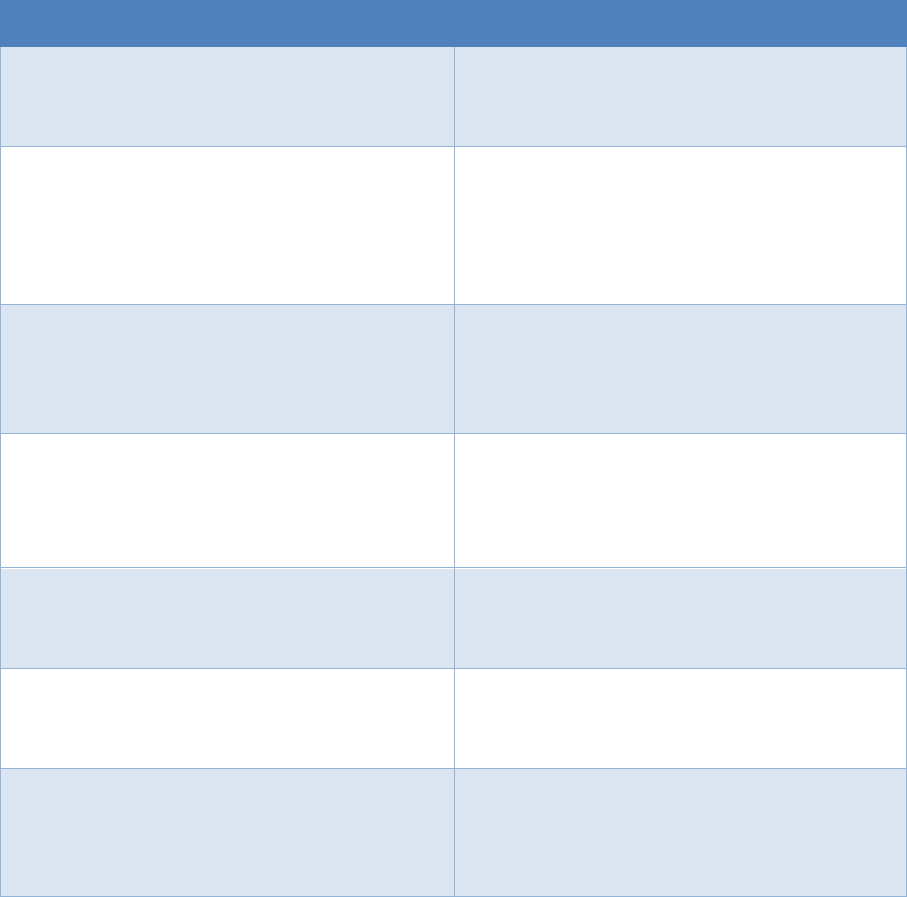
8
Table 1 provides a summary of tasks and expected outcomes for the RMF Prepare step at the
organization level. Applicable Cybersecurity Framework constructs are also provided.
Tasks
Outcomes
TASK P-1
RISK MANAGEMENT ROLES
Individuals are identified and assigned key roles
for executing the Risk Management Framework.
[Cybersecurity Framework: ID.AM-6; ID.GV-2]
TASK P-2
RISK MANAGEMENT STRATEGY
A risk management strategy for the
organization that includes a determination and
expression of organizational risk tolerance is
established.
[Cybersecurity Framework: ID.RM; ID.SC]]
TASK P-3
RISK ASSESSMENT – ORGANIZATION
An organization-wide risk assessment is
completed or an existing risk assessment is
updated.
[Cybersecurity Framework: ID-.RA; ID.SC-2]
TASK P-4
ORGANIZATIONALLY-TAILORED CONTROL
BASELINES AND CYBERSECURITY FRAMEWORK
PROFILES (OPTIONAL)
Organizationally-tailored control baselines
and/or Cybersecurity Framework Profiles are
established and made available.
[Cybersecurity Framework: Profile]
TASK P-5
COMMON CONTROL IDENTIFICATION
Common controls that are available for
inheritance by organizational systems are
identified, documented, and published.
TASK P-6
IMPACT-LEVEL PRIORITIZATION (OPTIONAL)
A prioritization of organizational systems with
the same impact level is conducted.
[Cybersecurity Framework: ID.AM-5]
TASK P-7
CONTINUOUS MONITORING STRATEGY –
ORGANIZATION
An organization-wide strategy for monitoring
control effectiveness is developed and
implemented.
[Cybersecurity Framework: DE.CM; ID.SC-4]

9
Table 2 provides a summary of tasks and expected outcomes for the RMF Prepare step at the system
level. Applicable Cybersecurity Framework constructs are also provided.
Tasks
Outcomes
TASK P-8
MISSION OR BUSINESS FOCUS
Missions, business functions, and mission/business processes
that the system is intended to support are identified.
[Cybersecurity Framework: Profile; Implementation Tiers;
ID.BE]
TASK P-9
SYSTEM STAKEHOLDERS
The stakeholders having an interest in the system are
identified.
[Cybersecurity Framework: ID.AM; ID.BE]
TASK P-10
ASSET IDENTIFICATION
Stakeholder assets are identified and prioritized.
[Cybersecurity Framework: ID.AM]
TASK P-11
AUTHORIZATION BOUNDARY
The authorization boundary [i.e., system] is determined.
TASK P-12
INFORMATION TYPES
The types of information processed, stored, and transmitted
by the system are identified.
[Cybersecurity Framework: ID.AM-5]
TASK P-13
INFORMATION LIFE CYCLE
All stages of the information life cycle are identified and
understood for each information type [processed, stored, or
transmitted by the system.
[Cybersecurity Framework: ID.AM-3; ID.AM-4]
TASK P-14
RISK ASSESSMENT – SYSTEM
A system-level risk assessment is completed or an existing risk
assessment is updated.
[Cybersecurity Framework: ID.RA; ID.SC-2]
TASK P-15
REQUIREMENTS DEFINITION
Security and privacy requirements are defined and prioritized.
[Cybersecurity Framework: ID.GV; FR.IP]
TASK P-16
ENTERPRISE ARCHITECTURE
The placement of the system within the enterprise
architecture is determined.
TASK P-17
REQUIREMENTS ALLOCATION
Security and privacy requirements are allocated to the system
and to the environment in which the system operates.
[Cybersecurity Framework: ID.GV]
TASK P-18
SYSTEM REGISTRATION
The system is registered for purposes of management,
accountability, coordination, and oversight. [Cybersecurity
Framework: ID.GV]
Together, the tables represent the Prepare Step.
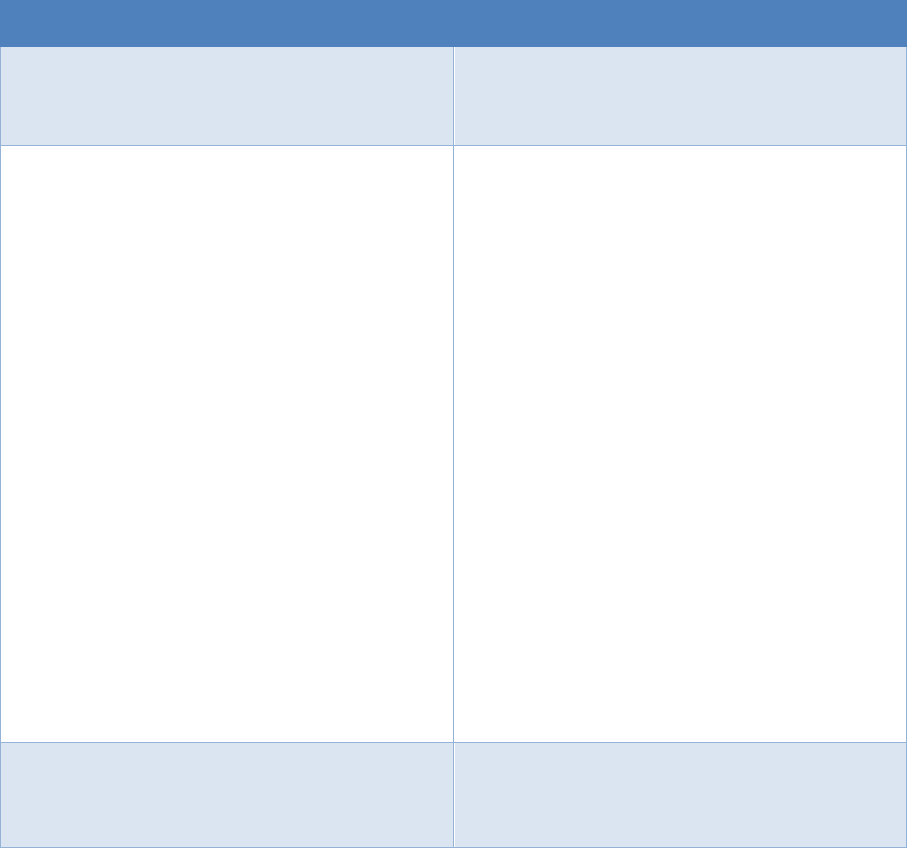
10
Categorization Step
Next is Categorize. The purpose of the Categorize step is to inform organizational risk management
processes and tasks by determining the adverse impact to organizational operations and assets,
individuals, other organizations, and the Nation with respect to the loss of confidentiality, integrity,
and availability of organizational systems and the information processed, stored, and transmitted by
those systems.
The Categorization Step is divided into three tasks with associated outcomes.
Tasks
Outcomes
TASK C-1
SYSTEM DESCRIPTION
The characteristics of the system are described
and documented.
[Cybersecurity Framework: Profile]
TASK C-2
SECURITY CATEGORIZATION
A security categorization of the system,
including the information processed by the
system represented by the organization-
identified information types, is completed.
[Cybersecurity Framework: ID.AM-1; ID.AM-2;
ID.AM-3; ID.AM-4; ID.AM-5]
Security categorization results are documented
in the security, privacy, and SCRM plans.
[Cybersecurity Framework: Profile]
Security categorization results are consistent
with the enterprise architecture and
commitment to protecting organizational
missions, business functions, and
mission/business processes.
[Cybersecurity Framework: Profile]
Security categorization results reflect the
organization’s risk management strategy.
TASK C-3
SECURITY CATEGORIZATION REVIEW AND
APPROVAL
The security categorization results are reviewed
and the categorization decision is approved by
senior leaders in the organization.
11
Sample Control Baseline
Not all DOD Information Systems are National Security Systems or NSS; however, the same standards
and process for categorizing NSS apply to non-NSS.
DOD Instruction 8510.01 requires all information systems and PIT systems for both NSS and non-NSS
to be categorized in accordance with Committee on National Security Systems Information, or CNSSI,
1253.
The CNSSI 1253 System Categorization process builds on and is a companion document to NIST SP
800-53. It should be used as a tool to select and agree upon appropriate protections for an IS or PIT
system.
Based upon Federal Information Processing Standard publication (FIPS) 199, Categorization of
systems uses the three security objectives (confidentiality, integrity, and availability) with one impact
value (low, moderate, or high) for each of the security objectives.
Security categorization results reflect the organization’s risk management strategy. Results must be
reviewed and approved by senior leaders in the organization.

12
Security Objective: Confidentiality
Confidentiality
L – Low
M – Medium
H – High
X – Security Controls from MIST Baselines
+ – Security Controls Added for Protection of NSS
Not all DOD ISs are NSS, however, the same standards and processes under the RMF also apply to ISs
that are not NSSs.
ID
Title
L
M
H
AC-1
Access Control Policy and Procedures
X X
X
AC-2
Account Management
X X
X
AC-2(1)
Account Management: Automated System
Account Management
X X
X
AC-2(2)
Account Management: Removal of
Temporary/Emergency Accounts
X X
X
AC-2(3)
Account Management: Disable Inactive Accounts
X X
X
AC-2(4)
Account Management: Automated Audit Actions
+
X
X
AC-2(5)
Account Management: Inactivity Logout
AC-2(6)
Account Management: Dynamic Privilege
Management
AC-2(7)
Account Management: Role-Based Schemes
+ +
+
AC-2(8)
Account Management: Dynamic Account
Creation
AC-2(9)
Account Management: Restrictions on Use of
Shared Groups/Accounts
+ +
+
AC-2(10)
Account Management: Shared/Group Account
Credential Termination
+ +
+
AC-2(11)
Account Management: Usage Conditions
AC-2(12)
Account Management: Account
Monitoring/Atypical Usage
+ +
X
AC-2(13)
Account Management: Disable Accounts for
High-Risk Individuals
+ +
X
AC-3
Access Enforcement
X X
X

13
Security Objective: Integrity
Integrity
ID
Title
L
M
H
L – Low
M – Medium
H – High
X – Security Controls from MIST Baselines
+ – Security Controls Added for Protection of NSS
Not all DOD ISs are NSS, however, the same standards and processes under the RMF also apply to ISs
that are not NSSs.
AC-1
Access Control Policy and Procedures
X X
X
AC-2
Account Management
X X
X
AC-2(1)
Account Management: Automated System
Account Management
X X
X
AC-2(2)
Account Management: Removal of
Temporary/Emergency Accounts
X X
X
AC-2(3)
Account Management: Disable Inactive Accounts
X X
X
AC-2(4)
Account Management: Automated Audit Actions
+
X
X
AC-2(5)
Account Management: Inactivity Logout
AC-2(6)
Account Management: Dynamic Privilege
Management
AC-2(7)
Account Management: Role-Based Schemes
+ +
+
AC-2(8)
Account Management: Dynamic Account
Creation
AC-2(9)
Account Management: Restrictions on Use of
Shared Groups/Accounts
+ +
+
AC-2(10)
Account Management: Shared/Group Account
Credential Termination
+ +
+
AC-2(11)
Account Management: Usage Conditions
AC-2(12)
Account Management: Account
Monitoring/Atypical Usage
+ +
X
AC-2(13)
Account Management: Disable Accounts for
High-Risk Individuals
+ +
X
AC-3
Access Enforcement
X X
X
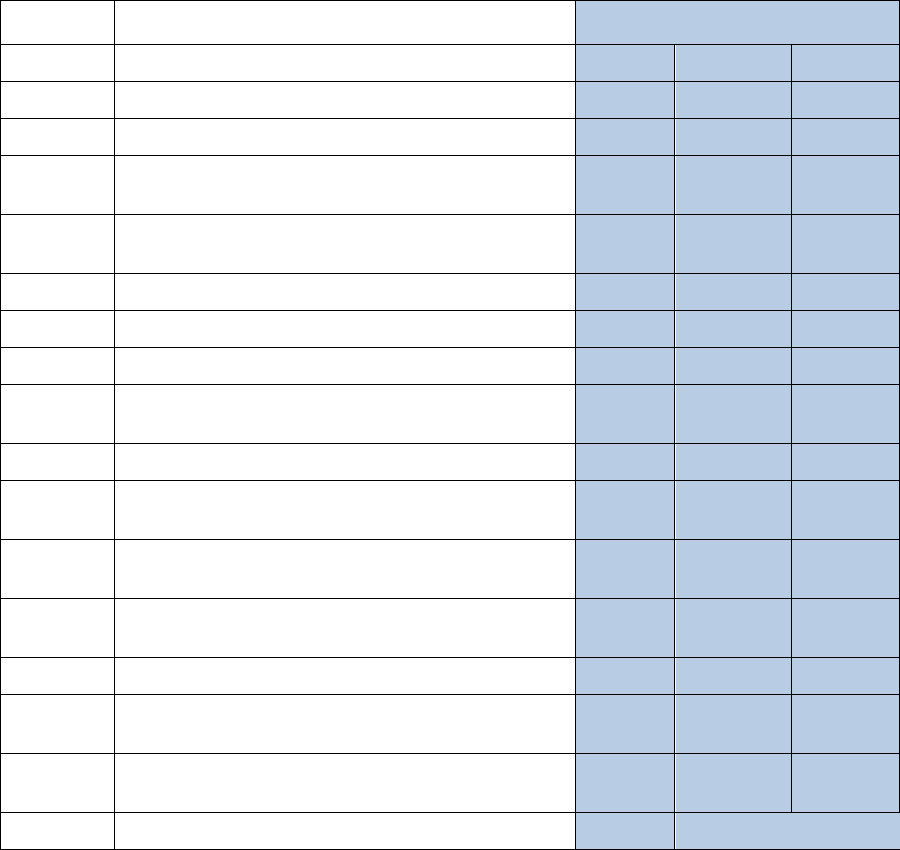
14
Security Objective: Availability
Availability
ID
Title
L – Low
M – Medium
H – High
X – Security Controls from MIST Baselines
+ – Security Controls Added for Protection of NSS
Not all DOD ISs are NSS, however, the same standards and processes under the RMF also apply to ISs
that are not NSSs.
L
M
H
AC-1
Access Control Policy and Procedures
X X
X
AC-2
Account Management
AC-2(1)
Account Management: Automated System
Account Management
AC-2(2)
Account Management: Removal of
Temporary/Emergency Accounts
AC-2(3)
Account Management: Disable Inactive Accounts
AC-2(4)
Account Management: Automated Audit Actions
AC-2(5)
Account Management: Inactivity Logout
+ +
X
AC-2(6)
Account Management: Dynamic Privilege
Management
AC-2(7)
Account Management: Role-Based Schemes
AC-2(8)
Account Management: Dynamic Account
Creation
AC-2(9)
Account Management: Restrictions on Use of
Shared Groups/Accounts
AC-2(10)
Account Management: Shared/Group Account
Credential Termination
AC-2(11)
Account Management: Usage Conditions
AC-2(12)
Account Management: Account
Monitoring/Atypical Usage
AC-2(13)
Account Management: Disable Accounts for
High-Risk Individuals
AC-3
Access Enforcement
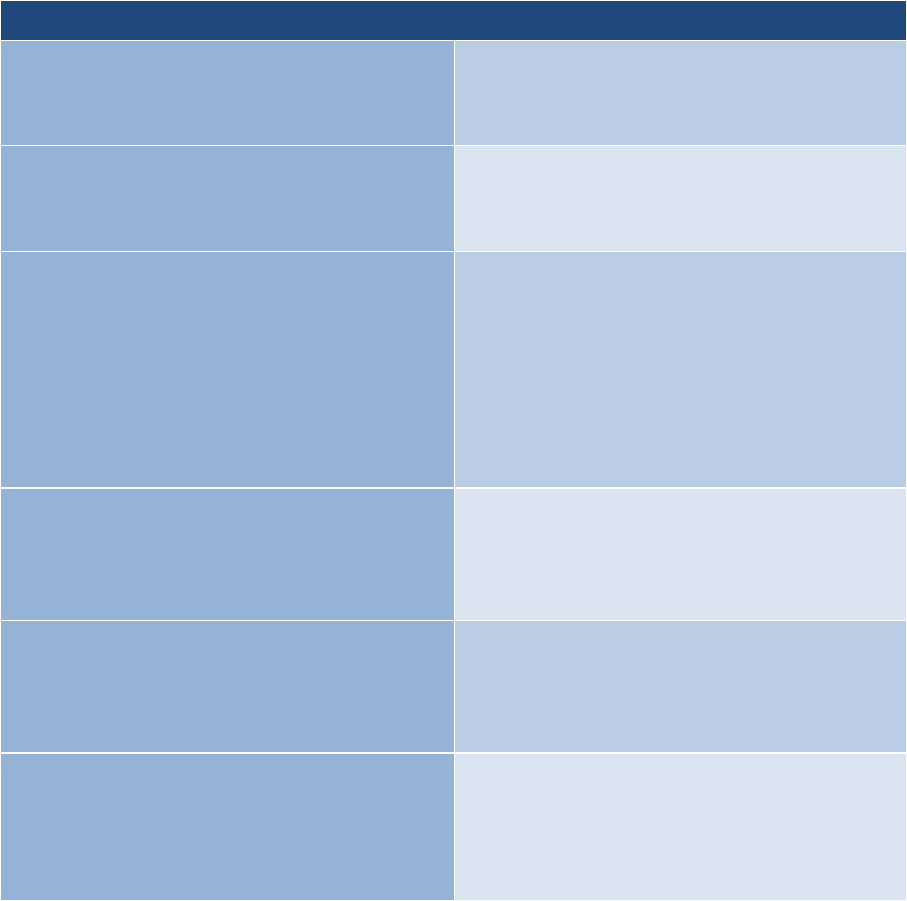
15
Select Step
Next is Select. The purpose of the Select step is to select, tailor, and document the controls necessary
to protect the information system and organization commensurate with risk to organizational
operations and assets, individuals, other organizations, and the Nation.
This table provides a summary of tasks and expected outcomes for the RMF Select step. Applicable
Cybersecurity Framework constructs are also provided with specific inputs for each of the tasks that
lead to the desired outcome.
Tasks
Outcomes
TASK S-1
CONTROL SELECTION
Control baselines necessary to protect the
system commensurate with risk are selected.
[Cybersecurity Framework: Profile]
TASK S-2
CONTROL TAILORING
Controls are tailored producing tailored
control baselines.
[Cybersecurity Framework: Profile]
TASK S-3
CONTROL ALLOCATION
Controls are designated as system-specific,
hybrid, or common controls.
Controls are allocated to the specific system
elements (i.e., machine, physical, or human
elements).
[Cybersecurity Framework: Profile; PR.IP]
TASK S-4
DOCUMENTATION OF PLANNED CONTROL
IMPLEMENTATIONS
Controls and associated tailoring actions are
documented in security and privacy plans or
equivalent documents.
[Cybersecurity Framework: Profile]
TASK S-5
CONTINUOUS MONITORING STRATEGY—
SYSTEM
A continuous monitoring strategy for the
system that reflects the organizational risk
management strategy is developed.
[Cybersecurity Framework: ID.GV; DE.CM]
TASK S-6
PLAN REVIEW AND APPROVAL
Security and privacy plans reflecting the
selection of controls necessary to protect the
system and the environment of operation
commensurate with risk are reviewed and
approved by the authorizing official.

16
Security Control Catalog
Selecting a set of security and privacy controls to protect mission and business functions while
managing security and privacy risks is a significant challenge for organizations. Correctly selected and
implemented controls meet security and privacy requirements defined by applicable laws, executive
orders, policies, regulations, and directives.
Tailoring of security controls is essential to address the diverse and specialized nature of DOD
systems. Overlays can be applied for unique characteristics such as medical, Industrial Control or
Weapon Systems while common controls are inherited from hosting environment and minimize
complexity of control selection. This is a great use of the "build once/use many" approach.
Implement Step
Next is Implement. The purpose of the Implement step is to implement the controls in the security
and privacy plans for the system and for the organization and to document in a baseline
configuration, the specific details of the control implementation.
This table provides a summary of tasks and expected outcomes for the RMF Implement step.
Applicable Cybersecurity Framework constructs are also provided. As shown in the table with specific
inputs for each of the tasks that lead to the desired outcome.
Tasks
Outcomes
TASK I-1
CONTROL IMPLEMENTATION
Controls specified in the security and privacy
plans are implemented.
[Cybersecurity Framework: PR.IP-1]
Systems security and privacy engineering
methodologies are used to implement the
controls in the system security and privacy
plans.
[Cybersecurity Framework: PR.IP-2]
TASK I-2
UPDATE CONTROL IMPLEMENTATION
INFORMATION
Changes to the planned implementation of
controls are documented.
[Cybersecurity Framework: PR.IP-1]
The security and privacy plans are updated
based on information obtained during the
implementation of the controls.
[Cybersecurity Framework: Profile]
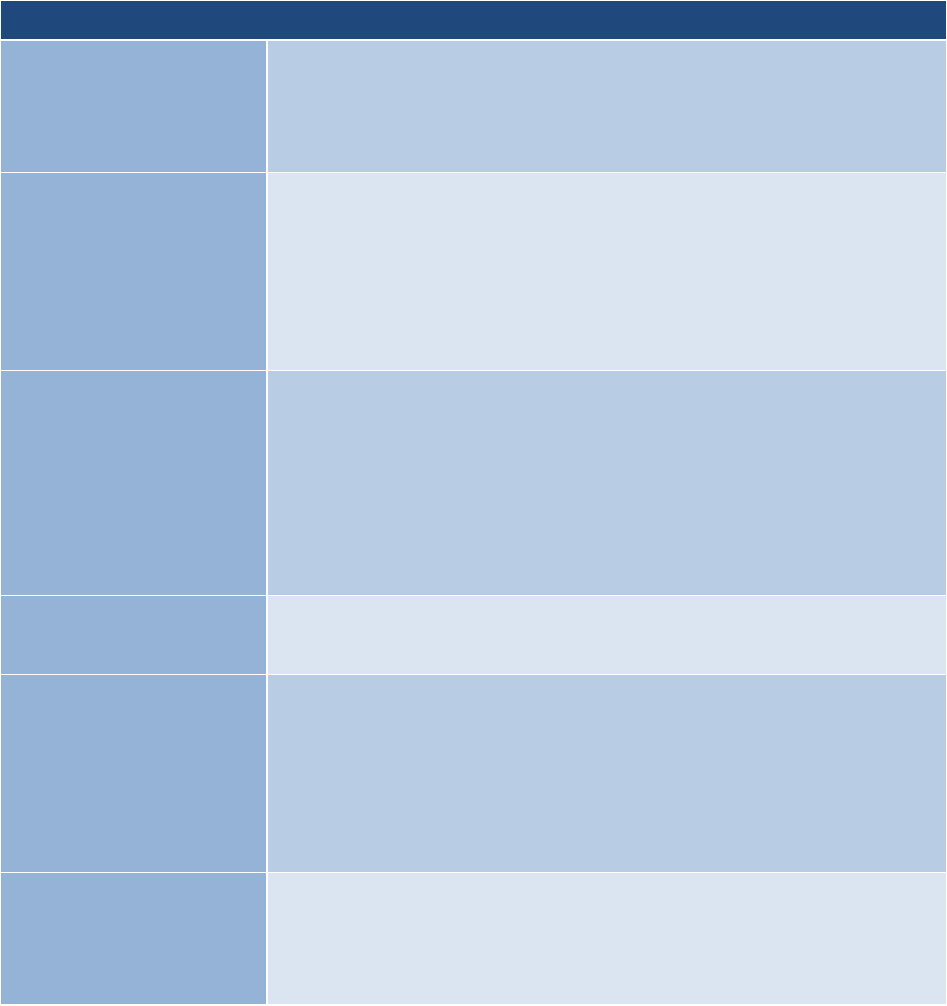
17
Assess Step
Next is Assess. The purpose of the Assess step is to determine if the controls selected for
implementation are implemented correctly, operating as intended, and producing the desired
outcome with respect to meeting the security and privacy requirements for the system and the
organization.
This table provides a summary of tasks and expected outcomes for the RMF Assess step. Applicable
Cybersecurity Framework constructs are also provided with specific inputs for each of the tasks that
lead to the desired outcome.
Tasks
Outcomes
TASK A-1
ASSESSOR SELECTION
An assessor or assessment team is selected to conduct the control
assessments.
The appropriate level of independence is achieved for the assessor or
assessment team selected.
TASK A-2
ASSESSMENT PLAN
Documentation needed to conduct the assessments is provided to the
assessor or assessment team.
Security and privacy assessment plans are developed and documented.
Security and privacy assessment plans are reviewed and approved to
establish the expectations for the control assessments and the level of
effort required.
TASK A-3
CONTROL ASSESSMENTS
Control assessments are conducted in accordance with the security and
privacy assessment plans.
Opportunities to reuse assessment results from previous assessments to
make the risk management process timely and cost-effective are
considered.
Use of automation to conduct control assessments is maximized to
increase speed, effectiveness, and efficiency of assessments.
TASK A-4
ASSESSMENT REPORTS
Security and privacy assessment reports that provide findings and
recommendations are completed.
TASK A-5
REMEDIATION ACTIONS
Remediation actions to address deficiencies in the controls
implemented in the system and environment of operation are taken.
Security and privacy plans are updated to reflect control
implementation changes made based on the assessments and
subsequent remediation actions.
[Cybersecurity Framework: Profile]
TASK A-6
PLAN OF ACTION AND
MILESTONES
A plan of action and milestones detailing remediation plans for
unacceptable risks identified in security and privacy assessment reports
is developed.
[Cybersecurity Framework: ID.RA-6]
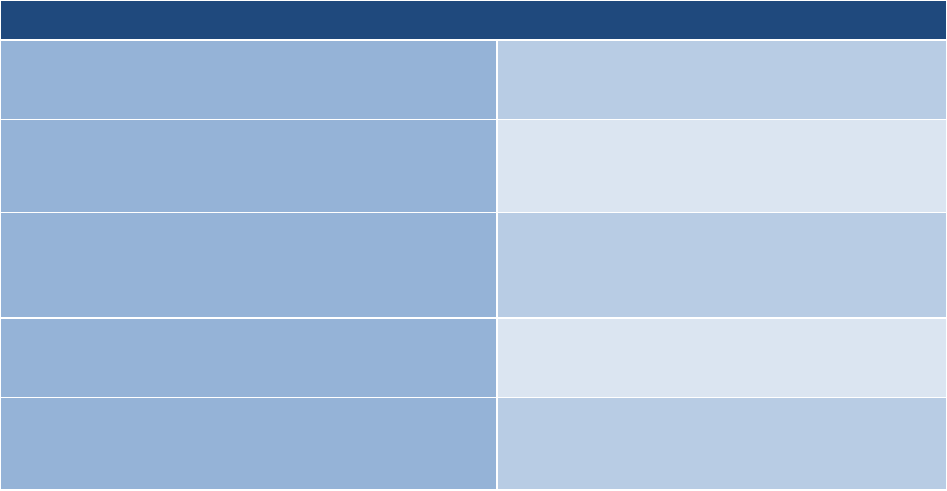
18
Authorize Step
Next is Authorize. The purpose of the Authorize step is to provide organizational accountability by
requiring a senior management official to determine if the security and privacy risk (including supply
chain risk) to organizational operations and assets, individuals, other organizations, or the Nation
based on the operation of a system or the use of common controls, is acceptable.
This Table provides a summary of tasks and expected outcomes for the RMF Authorize Step.
Applicable Cybersecurity Framework constructs are also provided. As shown in the table with specific
inputs for each of the tasks that lead to the desired outcome.
Tasks
Outcomes
TASK R-1
AUTHORIZATION PACKAGE
An authorization package is developed for
submission to the authorizing official.
TASK R-2
RISK ANALYSIS AND DETERMINATION
A risk determination by the authorizing official
that reflects the risk management strategy
including risk tolerance, is rendered.
TASK R-3
RISK RESPONSE
Risk responses for determined risks are
provided.
[Cybersecurity Framework: ID.RA-6]
TASK R-4
AUTHORIZATION DECISION
The authorization for the system or the
common controls is approved or denied.
TASK R-5
AUTHORIZATION REPORTING
Authorization decisions, significant
vulnerabilities, and risks are reported to
organizational officials.
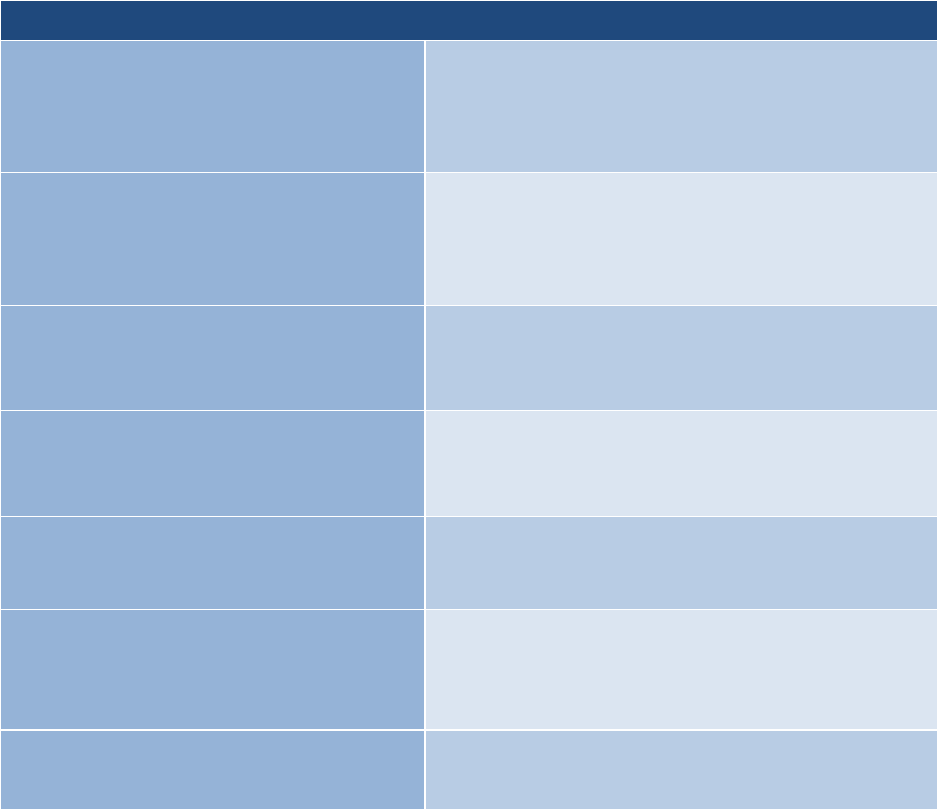
19
Monitor Step
Next is Monitor. The purpose of the Monitor step is to maintain an ongoing situational awareness
about the security and privacy posture of the information system and the organization in support of
risk management decisions.
This table provides a summary of tasks and expected outcomes for the RMF Monitor Step. Applicable
Cybersecurity Framework constructs are also provided. As shown in the diagram, there are specific
inputs for each of the tasks that lead to the desired outcome.
Tasks
Outcomes
TASK M-1
SYSTEM AND ENVIRONMENT CHANGES
The information system and environment of
operation are monitored in accordance with the
continuous monitoring strategy.
[Cybersecurity Framework: DE.CM; ID.GV]
TASK M-2
ONGOING ASSESSMENTS
Ongoing assessments of control effectiveness are
conducted in accordance with the continuous
monitoring strategy.
Cybersecurity Framework: ID.SC-4]
TASK M-3
ONGOING RISK RESPONSE
The output of continuous monitoring activities is
analyzed and responded to appropriately.
[Cybersecurity Framework: RS.AN]
TASK M-4
AUTHORIZATION PACKAGE UPDATES
Risk management documents are updated based on
continuous monitoring activities.
[Cybersecurity Framework: RS.IM]
TASK M-5
SECURITY AND PRIVACY REPORTING
A process is in place to report the security and
privacy posture to the authorizing official and other
senior leaders and executives.
TASK M-6
ONGOING AUTHORIZATION
Authorizing officials conduct ongoing authorizations
using the results of continuous monitoring activities
and communicate changes in risk determination and
acceptance decisions.
TASK M-7
SYSTEM DISPOSAL
A system disposal strategy is developed and
implemented, as needed.
20
Knowledge Check 6: Implementation Guidance
What is the last step in the RMF Process? Select the best response.
o Prepare Step
o Monitor Step
o Categorize Step
o Assess Step
Knowledge Check 7: Implementation Guidance
To which step do the following tasks belong?
Information Types
System Registration
Asset Identification
System Stakeholders
o Assess Step
o Authorize Step
o Implement Step
o Prepare Step
Knowledge Check 8: Implementation Guidance
In what Step does the system disposal strategy developed and implemented as needed? Select the
best response.
o Assess Step
o Prepare Step
o Monitor Step
o Implement Step

21
Lesson 5: RMF and DOD Acquisition
RMF and DOD IT Acquisition
Now that we have an understanding of the Risk Management Framework, let’s consider how it
applies to the DOD IT Acquisition process.
RMF and the Defense Acquisition Management System
The RMF is designed to be complementary to and supportive of DOD's acquisition management
system activities, milestones, and phases. RMF activities should be initiated as early as possible in the
DOD acquisition process to increase security and decrease cost. Requirements development,
procurement, and test and evaluation, also known as T&E, processes should be considered in
applying the RMF to the acquisition of DOD IT. Threats to these systems should be designated
consistent with the most severe risk to any individual component or subcomponent for consideration
of requirements, acquisition, and testing and evaluation.
Summary
Risk management is critical to your organization’s ability to achieve its mission and goals. Because of
the severity of the security threats faced by DOD organizations, use of the Risk Management
Framework to implement information security safeguards for DOD information technology systems is
essential.
Application of the Risk Management Framework will ensure that DOD Information Systems remain
secure and that our organization is always mission ready.
Conclusion
This concludes the Introduction to the Risk Management Framework course. You should now be able
to:
• Identify policies and regulations that govern the DOD RMF process,
• Define DOD Information Technology the categories of DOD information affected by the RMF
• Understand the Seven Step Implementation process of RMF
• Understand RMF applicability to the DOD Acquisition Process
To receive a credit for this course, you must take the course examination.

22
Knowledge Check Answer Key
Knowledge Check 1: RMF Policy & Governance
What Policy governs Cybersecurity?
Select the best answer.
o NIST SP 800-37
o DODI 8510.01
DODI 8500.01
o CNSSI 1253
Knowledge Check 2: RMF Policy & Governance
DOD participates in __________ and __________ as a vested stakeholder to create a more
standardized approach to Cybersecurity.
Select the best answer.
o Platform and Organization
o TIER 1 and TIER 3
• CNSS and NIST
o RMF and NISPOM
Knowledge Check 3: RMF Policy & Governance
What factors do organizations need to take into account when implementing a holistic approach to
organizational risk management?
Select the best answer.
o Supporting Information Systems
o Relationships between mission/business process
o Strategic Goals and Objectives
• All of the above
Knowledge Check 4: DOD Information Technology
PIT systems refer to:
Select the best answer.
o Priority Information Technology
o Proprietary Information Technology
• Platform Information Technology
o Process Information Technology
23
Knowledge Check 5: DOD Information Technology
What broad groups does DOD use to categorize information technology?
Select all that apply.
Information Systems
PIT
IT Services
IT Products
Knowledge Check 6: DOD Information Technology
What is the last step in the RMF Process?
Select the best response.
o Prepare Step
• Monitor Step
o Categorize Step
o Assess Step
Knowledge Check 7: Implementation Guidance
To which step do the following tasks belong:
Information Types
System Registration
Asset Identification
System Stakeholders
o Assess Step
o Authorize Step
o Implement Step
• Prepare Step
Knowledge Check 8: Implementation Guidance
In what Step does the system disposal strategy developed and implemented as needed?
Select the best response.
o Assess Step
o Prepare Step
• Monitor Step
o Implement Step
